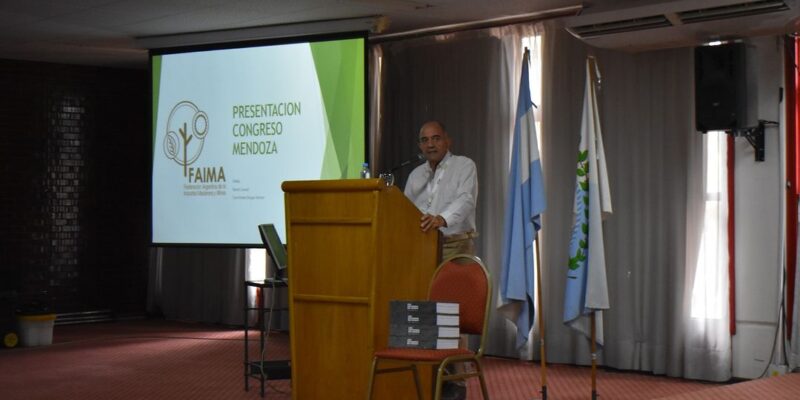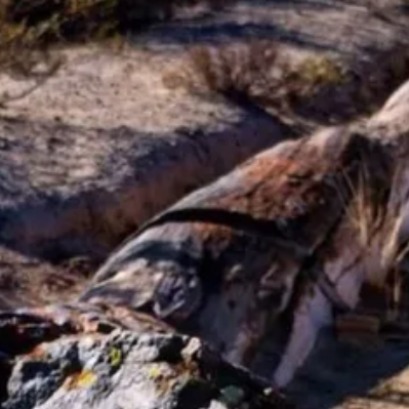
Desarrollar la industria maderera para mitigar el cambio climático
The importance of this natural resource in mitigating climate change.
In the month of the environment, the Argentine Federation of the Wood Industry (FAIMA), a second degree entity that represents 28 chambers throughout the country and includes the entire forest-industrial chain, highlights the importance of this natural resource in climate change mitigation.
Argentina has around 55 million hectares of native forests in different conservation categories. Native forests are natural forest ecosystems made up of mature native tree species, associated flora and fauna, which in their natural state provide dynamic balance and provide various environmental services to society, in addition to natural resources with the possibility of economic use.
Since 2007, Law 26,331 on Minimum Budgets for the Environmental Protection of Native Forests, also called the Forest Law, regulates the activity. "After going through a period of lack of financing from the funds, in the last 3 years there has been a substantial increase in the amounts provided for forest management," said Daniel Loutaif, coordinator of the Department of Native Forests of FAIMA.
This department is made up of the main actors of the chambers of Misiones, Salta, Chaco, Jujuy, Tucumán, Santiago and Tierra del Fuego. Since 2023, it has participated in the Forest Board of the Federal Environmental Council (COFEMA) with voice but no vote.
The responsible administration of natural resources constitutes a great opportunity for the sector, since the Timber Industry is a very important actor in the mitigation of greenhouse gases and in the capture of CO2 (carbon dioxide).
It should be noted that the environmental advantages are maximized when sustainable forest management is carried out that guarantees the regeneration of forests and the conservation of biodiversity.
In this sense, in Argentina, practices are being implemented that make it possible to make the production and use of forests compatible with the conservation of biodiversity and the sustainable and sustainable use of resources, seeking a balance between the environmental, social and economic aspects.
"Currently, agricultural and livestock activities can be complemented by forestry activities in the forest, through good planning and intersectoral coordination at the local and national levels," says Loutaif.
Countering climate change
Trees are widely recognized for their contribution to climate change mitigation, as they are accepted as the most efficient nature-based system for absorbing CO2 from the atmosphere. In fact, it is estimated that a cubic meter of wood contains around a ton of CO2, which is equivalent to the consumption of 350 liters of gasoline.
“The transforming activity of the forestry industry continues to keep CO2 in the product throughout its useful life, be it a piece of furniture, a door, a floor or a house. In other words, the more we use products made from the natural resource wood, the more we benefit the environment”, Loutaif specifies.
Following this line, the contribution that the use of wood makes by substituting non-renewable and energy-intensive products is vital, as well as in the generation of alternative energy based on wood by-products. Wood not only has the capacity to store CO2 in its solid uses, but also offers alternatives to replace products of fossil origin.
Regarding construction, wood reappears as the star material for being sustainable: it is more efficient in energy consumption and replaces non-renewable products (cement, iron, aluminum) and with a high level of greenhouse gas emissions, making it in a preferable option.
With wooden houses, carbon is removed from the environment, while the carbon footprint of the construction process is zero or positive. There is no other material with those characteristics.
On the other hand, for its final disposal, it is renewable and recyclable. “The possibility of transforming the waste from the activity into materials such as chips, briquettes, pellets, which are used for the cogeneration of energy, as fertilizer or renewable fuel; It makes it possible to establish a circular economy that is very important for the productive activity of the sector”, he points out.
These characteristics not only help to mitigate climate change throughout the production chain, but also to a circular bioeconomy, and with it, to more sustainable and inclusive options, given the high job creation it generates, contributing to growth and economic development.
The promotion of the responsible use of wood, with its consequent policy of promoting afforestation, can position Argentina at the forefront of environmental issues.
Likewise, our country, based on its native forests, also presents a unique opportunity to establish itself in the world through the development of carbon markets.
Carbon markets emerge

IT MAY INTEREST YOU
 Missions | New illegal felling in the Piñalito Provincial Park in San Pedro reveals the silent expansion of deforestation in protected areas
Missions | New illegal felling in the Piñalito Provincial Park in San Pedro reveals the silent expansion of deforestation in protected areas
The advance of deforestation on protected areas was once again evident this week in the Piñalito Sur Provincial Park, in San Pedro, where the Ministry of Ecology and Renewable Natural Resources confirmed a new case of selective illegal logging. The event occurs in a context of growing concern about the fragility of the environmental control system in rural and border areas, where the scarcity of resources, personnel and logistics limits the capacity of surveillance against criminal organizations organized to steal native woods and market them on the black market in connivance with sawmill owners.
 The forest of the oldest shadows: the story of the petrified trees
The forest of the oldest shadows: the story of the petrified trees
One of the natural treasures of Río Negro turns 23 years old under the protection law that allows its conservation. Where it is and how it was formed. Río Negro celebrates 23 years of conservation in the petrified forest as a Protected Natural Area (ANP). It is a space of 625 hectares that protects an exceptional site of fossil trunks that date back more than 60 million years.
 Combilift Unveils the 2025 Christmas video “Twelve Days of Christmas” – with a Twist!
Combilift Unveils the 2025 Christmas video “Twelve Days of Christmas” – with a Twist!
Monaghan, Ireland – November 2025





















